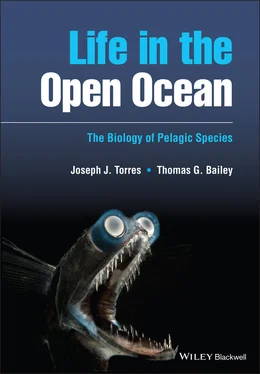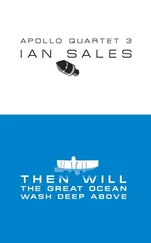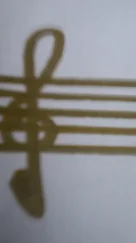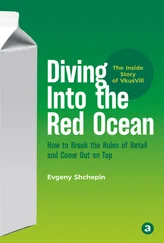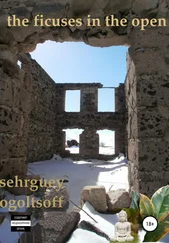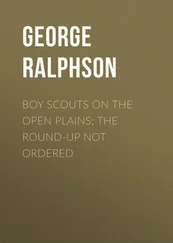Joseph J. Torres - Life in the Open Ocean
Здесь есть возможность читать онлайн «Joseph J. Torres - Life in the Open Ocean» — ознакомительный отрывок электронной книги совершенно бесплатно, а после прочтения отрывка купить полную версию. В некоторых случаях можно слушать аудио, скачать через торрент в формате fb2 и присутствует краткое содержание. Жанр: unrecognised, на английском языке. Описание произведения, (предисловие) а так же отзывы посетителей доступны на портале библиотеки ЛибКат.
- Название:Life in the Open Ocean
- Автор:
- Жанр:
- Год:неизвестен
- ISBN:нет данных
- Рейтинг книги:5 / 5. Голосов: 1
-
Избранное:Добавить в избранное
- Отзывы:
-
Ваша оценка:
- 100
- 1
- 2
- 3
- 4
- 5
Life in the Open Ocean: краткое содержание, описание и аннотация
Предлагаем к чтению аннотацию, описание, краткое содержание или предисловие (зависит от того, что написал сам автор книги «Life in the Open Ocean»). Если вы не нашли необходимую информацию о книге — напишите в комментариях, мы постараемся отыскать её.
Life in the Open Ocean: The Biology of Pelagic Species
Life in the Open Ocean: The Biology of Pelagic Species
Life in the Open Ocean — читать онлайн ознакомительный отрывок
Ниже представлен текст книги, разбитый по страницам. Система сохранения места последней прочитанной страницы, позволяет с удобством читать онлайн бесплатно книгу «Life in the Open Ocean», без необходимости каждый раз заново искать на чём Вы остановились. Поставьте закладку, и сможете в любой момент перейти на страницу, на которой закончили чтение.
Интервал:
Закладка:
5 Chapter 5Figure 5.1 Benthic and pelagic nemerteans. (a) Cerebratulus sp., a common be...Figure 5.2 Gastrulation and coelom formation. (a) invagination of a coelobla...Figure 5.3 Diagrammatic cross sections of grades of structure. (a) acoelomat...Figure 5.4 Cross section of the pelagic nemertean Nectonemertes species.Figure 5.5 Diagrams of symmetry. (a) Spherical; (b) radial (Cnidaria); (c) b...Figure 5.6 Diagrams illustrating the effects of contraction of circular musc...Figure 5.7 Histological structure and anatomy of nemerteans. (a) Section thr...Figure 5.8 Schematic vertical longitudinal sections showing the arrangement ...Figure 5.9 Schematic diagrams showing the relationships between the parts of...Figure 5.10 Stylet apparatus of Pelagonemertes .Figure 5.11 Nemertean body and caudal fin shapes. (a) Body outlines of 10 sp...Figure 5.12 The pelagic nemertean Bathynemertes species.Figure 5.13 Nemertean nervous system. (a) The nervous system of Neuronemerte ...Figure 5.14 Nemertean sense organs. (a) The head of the hoplonemertean Amphi ...Figure 5.15 Integumentary and subepidermal sense organs in pelagic nemertean...Figure 5.16 Nemertean circulatory system. (a) Circulatory and excretory syst...Figure 5.17 Nemertean circulatory system. (a) Dorsal view of the internal st...Figure 5.18 Nemertean excretory system. (a) Protonephridial cluster of Drepa ...Figure 5.19 Nemertean digestive system. (a) Longitudinal section through the...Figure 5.20 Reproductive systems in male and female Nectonemertes mirabilis ....Figure 5.21 Vertical profiles for 15 North Atlantic bathypelagic nemertean s...
6 Chapter 6Figure 6.1 Dendrogram showing phylogenetic relationships of annelids (Brusca...Figure 6.2 Cross section through a segment of the clam worm Alitta virens ( f...Figure 6.3 Dorsal and ventral views of the head of Alitta virens .Figure 6.4 (a) The echiuroid Urechis caupo in its burrow. Note its body shap...Figure 6.5 Representative examples of the four most commonly caught families...Figure 6.6 Examples of three less common pelagic marine polychaete families....Figure 6.7 Examples from two families of Terebellid polychaetes. (a) Acrocir...Figure 6.8 Dorsal view of Alitta virens showing the general arrangement of i...Figure 6.9 Metameric anatomy of annelids. (a) Diagram of the anatomy within ...Figure 6.10 External anatomy of polychaetes: regional zonation and growth. (...Figure 6.11 Structure of the head and parapodia of marine polychaetes from t...Figure 6.12 The chaetopterid Chaetopterus variopedatus showing heteronomous ...Figure 6.13 Different types of chaetae from various polychaetes.Figure 6.14 Examples of structural differences in polychaete parapodia. (a) ...Figure 6.15 Polychaete excretory systems. (a) Hypothetical polychaete excret...Figure 6.16 Polychaete excretory systems. (a) Hypothetical polychaete excret...Figure 6.17 Polychaete excretory systems. (a) Hypothetical polychaete excret...Figure 6.18 Dorsal view of the central nervous system of Alitta virens .Figure 6.19 Polychaete sense organs. (a) Sensory and supporting granular cel...Figure 6.20 Polychaete photoreception (eyes). (a) A simple chaetopterid eye....Figure 6.21 Polychaete circulatory systems. (a) Circulation within a segment...Figure 6.22 Illustration of the tube‐dwelling polychaete Cirratulus cirratus Figure 6.23 (a) An epitokous Neanthes nubila ; (b and c) the dimorphic parapo...Figure 6.24 A pelagic tomopterid showing the undulatory sinusoidal shape ass...Figure 6.25 Parapodial musculature and movement. (a and b) Movement of a par...Figure 6.26 Form of the proboscis in alciopines.Figure 6.27 Vertical distribution of the Antarctic polychaete P. longicirrat ...
7 Chapter 7Figure 7.1 Onychophorans. (a) Conjectural reconstruction of Asheaia . (b) Ano...Figure 7.2 Tardigrade general anatomy. (a) A typical “water bear,” Echinicus ...Figure 7.3 Archetypic body architecture of a malacostracan crusteacean.Figure 7.4 Classes Remipedia and Cephalocarida. (a) Stylized drawing of a re...Figure 7.5 The leptostracan crustacean Nebalia bipes .Figure 7.6 Stomatopoda. (a) External anatomy of the stomatopod Squilla ; (b) ...Figure 7.7 General body form and external anatomy of a typical euphausiid Me ...Figure 7.8 External anatomy of the amphionid crustacean Amphionides reynaudi ...Figure 7.9 A typical dendrobranch decapod; the penaeid shrimp Penaeus setife ...Figure 7.10 Mysid and lophogastrid shrimps. (a) Typical female mysid shrimp....Figure 7.11 Isopoda. (a) The giant bathypelagic isopod Anuropus bathypelagic ...Figure 7.12 Amphipoda. (a) A typical gammarid amphipod. (b) A typical hyperi...Figure 7.13 (a) Cytology of the integument of the lined shore crab, Gecarinu ...Figure 7.14 The eye and eye stalk of the shrimp, Leander , showing the X‐orga...Figure 7.15 Cross section of a body segment of a stylized arthropod showing ...Figure 7.16 Generalized arthropod body and limb joints. (a) Body wall joint ...Figure 7.17 Crustacean trunk limbs. (a) Generalized biramous limb. (b) Biram...Figure 7.18 Basic principles involved in excretion: ultrafiltration, secreti...Figure 7.19 The crustacean antennal or “green” gland. (a) Cut‐away of the he...Figure 7.20 Basic structure of the decapod crustacean nervous system.Figure 7.21 Compound eye types. (a) Apposition eye with axial light receptio...Figure 7.22 Fields of view and binocular overlap of the medial eyes of four ...Figure 7.23 Crustacean mechanoreception. (a) Antennal statocyst showing the ...Figure 7.24 Deep‐sea penaeid shrimp showing very long trailing antennae.Figure 7.25 Crustacean chemoreception. (a) Distribution of chemosensitivity ...Figure 7.26 Dose response to an equimolar mixture of L‐glutamic acid, taurin...Figure 7.27 Crustacean circulatory systems. (a) Major organ systems of a gen...Figure 7.28 Eucarid gills. (a) Positional gill types in decapod crustaceans....Figure 7.29 Crustacean gills. (a) a,b,c, on left side of figure‐ Circulation...Figure 7.30 Decapod gill types. (a) Phyllobranchiate; (b) trichobranchiate; ...Figure 7.31 Anatomy of the stomach of the crayfish, Astacus (lateral view)....Figure 7.32 Developmental sequence of the penaeid shrimp, Trachypenaeus cons ...Figure 7.33 Illustrations of nine important species of euphausiids drawn to ...Figure 7.34 External morphology of an euphausiid.Figure 7.35 Euphausiid appendages. (a) Thoracic limb of Euphausia superba . (...Figure 7.36 Longitudinal section through the bi‐lobed eye of Stylocheiron lo ...Figure 7.37 Spectral characteristics of the eyes and luminescence of euphaus...Figure 7.38 Abdominal photophores of (a) Euphausia sp. and (b) Stylocheiron ...Figure 7.39 Abbreviated sequence of larval development in euphausiids using ...Figure 7.40 Dendrobranchiate reproduction. Dendrobranch female reproductive ...Figure 7.41 Development of sinking eggs of Euphausia superba in shelf and oc...Figure 7.42 The feeding basket of Euphausia superba , and the size of common ...Figure 7.43 Vertical distribution profiles of 20 species of euphausiids in t...Figure 7.44 Midwater isolume trawling system for sampling at sonic scatterin...Figure 7.45 Two dawn and dusk examples of the correspondence of an isolume, ...Figure 7.46 Vertical migrations of three discrete scattering layers (A–C) in...Figure 7.47 Diel vertical distribution patterns in krill, non‐krill zooplank...Figure 7.48 Calman's “caridoid facies,” the ancestral shrimp form.Figure 7.49 Decapod external anatomy. (a) Lateral view of a typical caridean...Figure 7.50 Schematic ventral representation of the hepatopancreas and organ...Figure 7.51 Dendrobranch larval stages. (a) First nauplius of Sergia lucens ;...Figure 7.52 Caridean larval stages. (a) Caridean egg after teloblast formati...Figure 7.53 Schematic illustration of the diurnal migration of pelagic shrim...Figure 7.54 Vertical distributions of 29 species of midwater decapods and my...Figure 7.55 Diet composition of the dominant decapods and mysids in the east...Figure 7.56 Galatheidae: pelagic squat lobsters. (a) The pelagic red crab Pl ...Figure 7.57 Mysid anatomy. (a) Dorsal view of a typical mysid (limbs removed...Figure 7.58 Eucopiid anatomy. A young female Eucopia australis with elongate...Figure 7.59 Lophogastrid anatomy. (a) Internal anatomy of a male lophogastri...Figure 7.60 Lophogastrid and mysid nervous systems. (a) The nerve cord of th...Figure 7.61 Mysid circulation. (a) Principal blood vessels and circulation i...Figure 7.62 Diagrammatic representation of the internal anatomy of a mysid s...Figure 7.63 Size frequency distribution of 4239 individuals of Gnathophausia ...Figure 7.64 Growth in size of Gnathophausia ingens from egg through final mo...Figure 7.65 Locomotion in lophogastrids and mysids. (a) Lateral view of the ...Figure 7.66 Swimming in Gnathophausia ingens . (a) Branched appendages of G. ...Figure 7.67 Gammarid amphipod structure. (a) Lateral view of the internal an...Figure 7.68 A comparison of the forms of two common hyperiid amphipods with ...Figure 7.69 Amphipod nervous system. (a) The ventral nerve cord of Gammarus ...Figure 7.70 Luminescence sites (black) in three amphipod species. (a) The ga...Figure 7.71 Digestive system of the hyperiid amphipod Cystisoma . (a) Positio...Figure 7.72 Larval developmental stages of the hyperiid amphipod Vibilia arm ...Figure 7.73 Reproduction in the hyperiid amphipod Phronima . (a) Adult Phroni ...Figure 7.74 Number of species of amphipods as a function of depth.Figure 7.75 The giant ostracod Gigantocypris . (a) Frontal view of Gigantocyp ...Figure 7.76 The pleustonic “blue buoy” barnacle Dosima fascicularis . See col...Figure 7.77 The “giant” copepod Gaussia princeps . Carapace is deep blue in l...
Читать дальшеИнтервал:
Закладка:
Похожие книги на «Life in the Open Ocean»
Представляем Вашему вниманию похожие книги на «Life in the Open Ocean» списком для выбора. Мы отобрали схожую по названию и смыслу литературу в надежде предоставить читателям больше вариантов отыскать новые, интересные, ещё непрочитанные произведения.
Обсуждение, отзывы о книге «Life in the Open Ocean» и просто собственные мнения читателей. Оставьте ваши комментарии, напишите, что Вы думаете о произведении, его смысле или главных героях. Укажите что конкретно понравилось, а что нет, и почему Вы так считаете.
